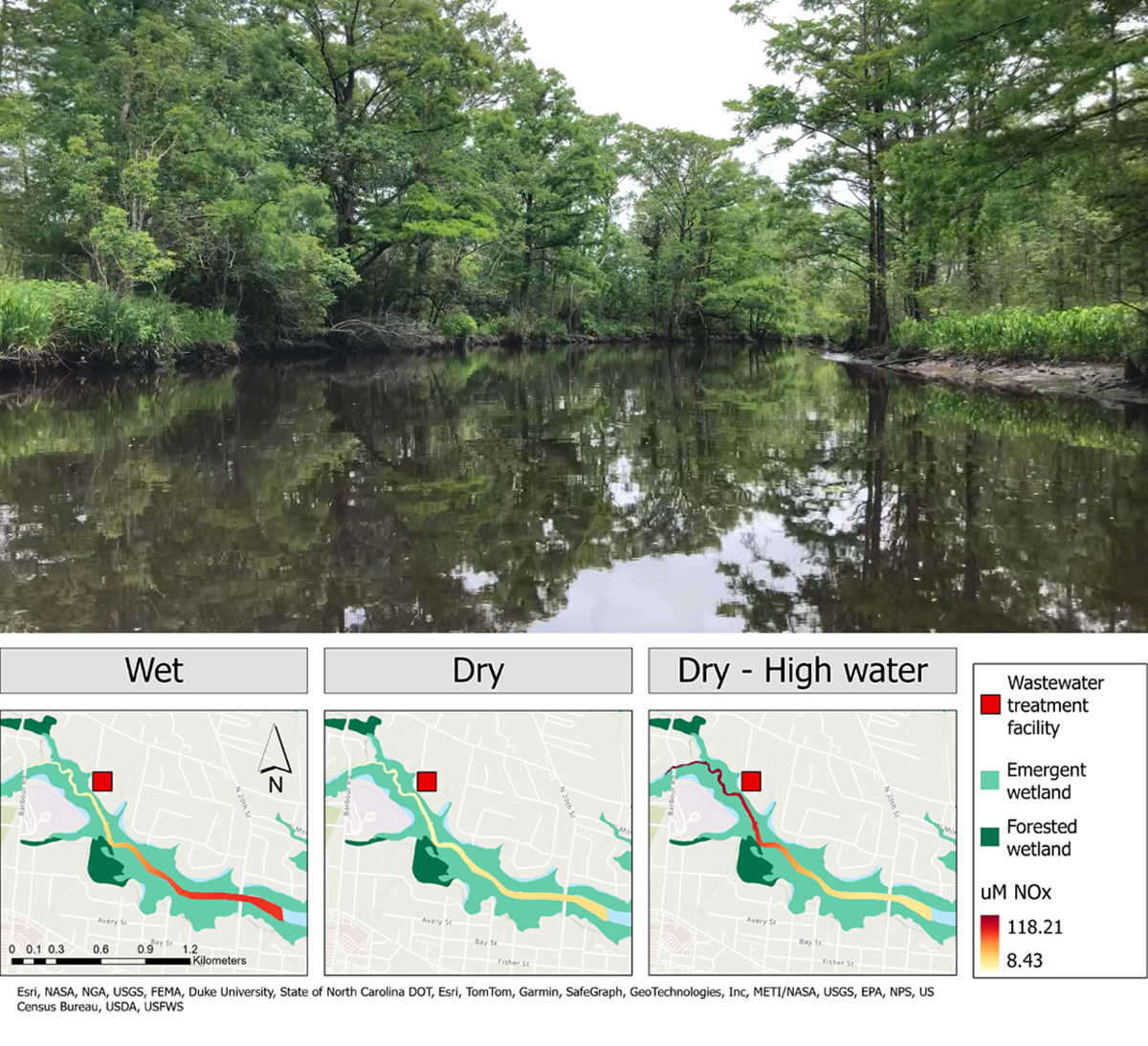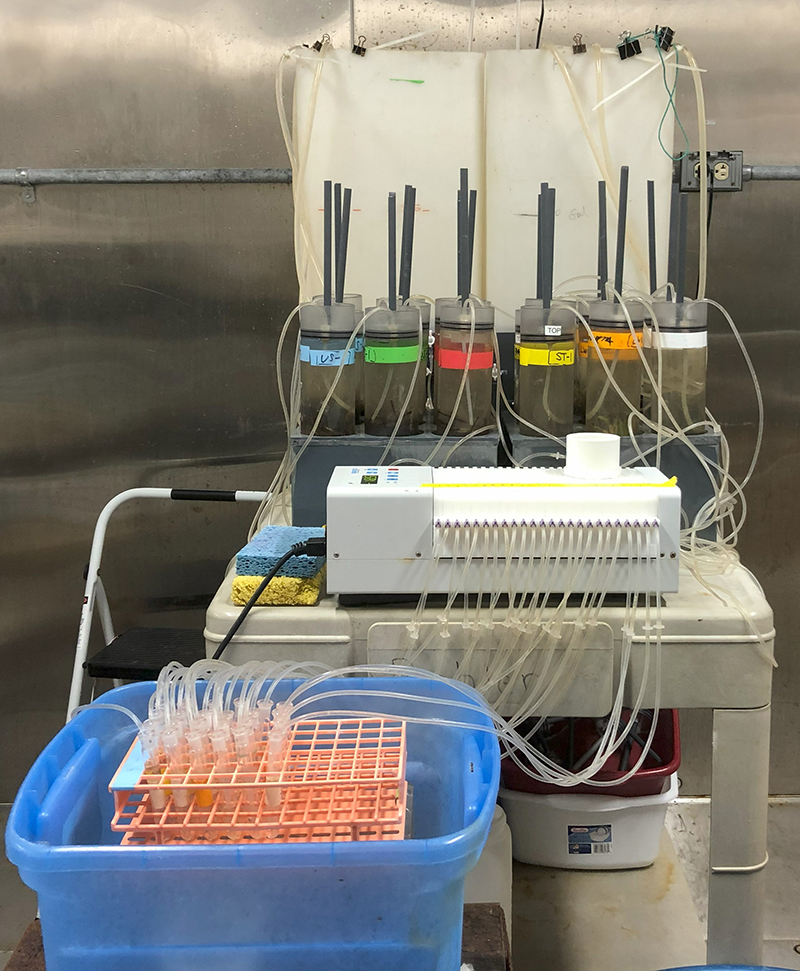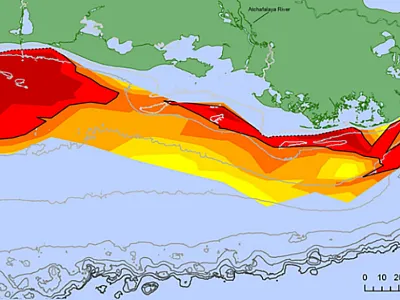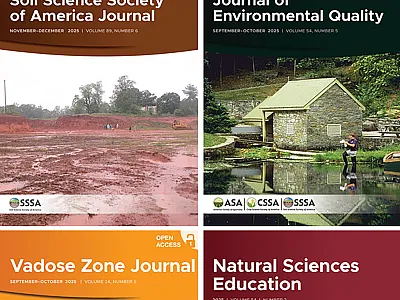Water quality patterns and processes differ in two tidal systems

In coastal systems that are experiencing rapid population growth, increasing amounts of nitrogen in stormwater and wastewater threaten water quality. Focusing on two coastal systems with different tidal influences, scientists in North Carolina found that water quality patterns and processes differed.

Nitrogen is essential for successful ecosystems, but too much can have negative environmental impacts. In coastal systems that are experiencing rapid population growth, increasing amounts of nitrogen in stormwater and wastewater threaten water quality.
Coastal wetlands can absorb some of this extra nitrogen, but the limits are unclear. These systems are dynamic, characterized by water and salt levels that ebb and flow, making it difficult to understand patterns and impacts of persistent nitrogen pollution.
Focusing on two coastal systems with different tidal influences, scientists in North Carolina utilized long-term environmental monitoring data and conducted laboratory experiments to establish enrichment patterns, measure nitrogen removal capacity, and identify conditions that affect these processes. They observed an upper nitrogen removal limit in a riverine-dominated swamp forest system, which contrasted with a tidally dominated marsh system that did not exhibit the same limitation.
These findings provide important insights into ecosystem functioning in increasingly human-influenced environments.
Dig deeper
Smiley, A. M. H., Thompson, S. P., & Piehler, M. F. (2025). Chronic enrichment affects nitrogen removal in tidal freshwater river and estuarine creek sediments. Journal of Environmental Quality, 54, 420–434. https://doi.org/10.1002/jeq2.20674
Text © . The authors. CC BY-NC-ND 4.0. Except where otherwise noted, images are subject to copyright. Any reuse without express permission from the copyright owner is prohibited.









